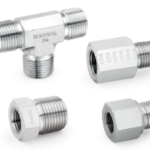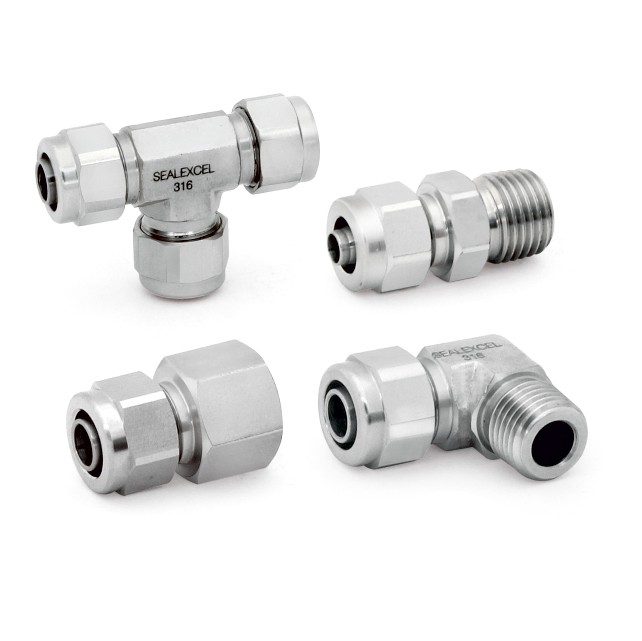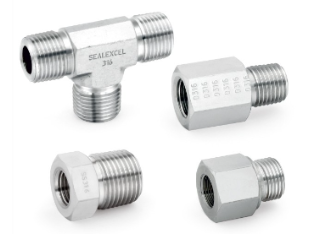
Instrument Tubing Fittings: Your Guide to Precision Connections
November 20, 2024
Uses & Applications for Stainless Steel Tube Fittings in Industry
March 13, 2025Tube fittings play a key role in many sectors like plumbing, HVAC, automotive, and aerospace. They link tubes or pipes, allowing fluids to flow and maintaining system integrity. Given the numerous tube fitting types out there, choosing the correct one is vital for system safety, functioning, and lifespan. This article will examine different tube fitting types, what they do, and what to think about when selecting the correct one.
Common Tube Fitting Types:
- Compression Fittings: These are pretty common. They have a ferrule that presses against the tube when tightened, resulting in a seal. They’re multipurpose and simple to put in, used in many scenarios.
- Flare Fittings: These fittings have a flared tube fitting end that gets inserted into the fitting and secured with a nut. They give a solid seal and are typically found in automotive and hydraulic systems.
- SAE Fittings: These flare fittings comply with SAE standards, ensuring they’ll work across different makers. They’re popular in automotive and industrial uses.
- JIC Fittings: Like SAE fittings, JIC fittings are a flare fitting type that meets certain industry standards. They’re often in hydraulic and high-pressure scenarios.
- O-Ring Fittings: These fittings use an O-ring for a seal between the tube and fitting. They’re reliable and often used in demanding and high-pressure situations.
- Push-to-Connect Fittings: Designed for speedy and simple installation. They have a mechanism allowing the tube to be pushed into the fitting for a strong link. They’re mostly used in pneumatic and measurement systems.
- Swagelok Fittings: A type of premium, high-pressure fitting known for reliability and performance. They’re used often in fields like chemical processing, oil, gas, and aerospace.
Factors to Consider When Choosing Tube Fitting Types:
- Application: The specific use will determine the required fitting. Think about the fluid type, pressure, temperature, and vibration levels.
- Tube Material: This will also affect the choice. Different materials will have different compatibility.
- Installation Requirements: The ease of installation and tools needed matter, as some types are simpler to put in than others.
- Pressure and Temperature Ratings: The fittings you choose should be rated for the expected pressure and temperature.
- Vibration and Shock: If the system will experience vibration or shock, choose fittings that can handle it.
- Cost: Compare different fitting types’ costs to find the most budget-friendly solution.
Importance of Choosing the Right Tube Fitting Types:
The correct choice of tube fitting types is key for several reasons:
- System Reliability: Using unsuitable fittings may cause leaks, leading to system breakdown, fluid loss, and possible safety hazards.
- System Performance: Choosing the right fittings ensures fluid flow and system function.
- Maintenance Costs: High-quality fittings could decrease the need for common maintenance and repairs, thereby reducing costs.
- Safety: Choosing the wrong fittings can bring about big safety risks in critical applications.
Conclusion:
Making the right choice of tube fitting types can dramatically affect the performance and reliability of any system. Paying attention to the things discussed in this article can help pick the right fittings for your particular application, ensuring system integrity and optimal performance.



